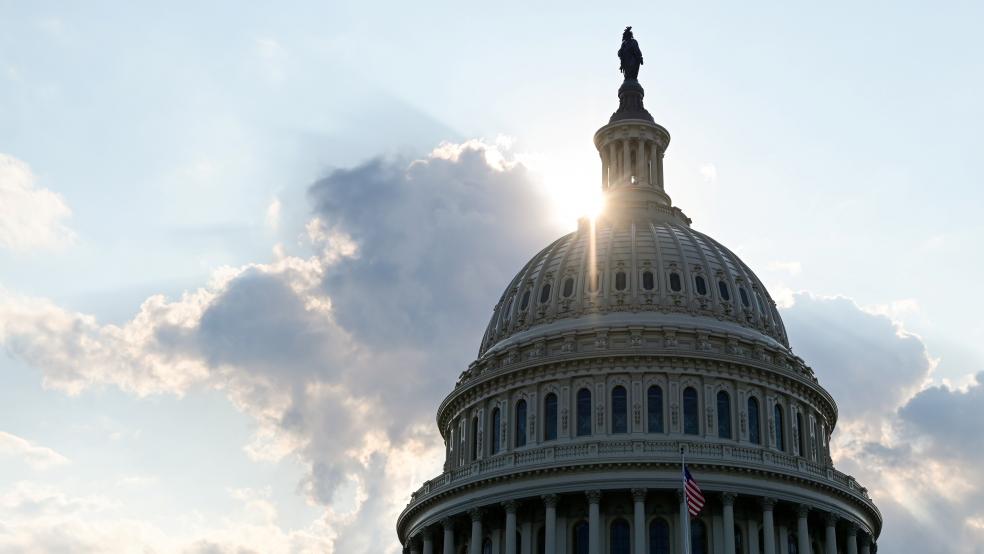More help, at long last, is on the way.
After months of partisan gridlock and inaction — even as hundreds of thousands of Americans were dying due to Covid-19 and millions more were falling into poverty — congressional leaders have finally agreed on another $900 billion coronavirus relief package.
On Monday afternoon, mere hours ahead of planned votes, lawmakers released the text of the legislation, 5,593 pages combining pandemic relief and $1.4 trillion in funding for government operations for the full 2021 fiscal year.
“We’re going to stay here until we finish tonight,” Senate Majority Leader Mitch McConnell (R-KY) said. The House and Senate late Sunday passed a one-day stopgap government funding measure, averting a partial shutdown and allowing more time for the legislative text to be finalized and passed.
The deal came together after lawmakers settled a last-minute clash over the Federal Reserve’s emergency lending authority.
The House is now expected to vote on the package Monday night, followed by the Senate. Congress is also set to approve a week-long stopgap spending measure to give lawmakers time to get the massive year-end legislation printed and signed into law by President Trump.
Here’s what in the Covid relief package, what isn’t, and what it all means:
What’s in the Relief Bill
The Committee for a Responsible Federal Budget has provided a preliminary analysis of its provisions based on legislative summaries and press releases:
“Stimulus checks” – as soon as next week: Individuals earning up to $75,000 a year will receive $600 payments, including both adults and children, with amounts declining above that income level, at a total cost of $166 billion.
Treasury Secretary Steven Mnuchin said Monday that Americans will start seeing those payments within days. “This is a very, very fast way of getting money into the economy,” he told CNBC. “Let me emphasize: People are going to see this money at the beginning of next week.”
But while direct-deposit payments will arrive quickest and could hit bank accounts as soon as next week, checks sent by mail could reportedly take until late January to start reaching Americans’ mailboxes.
Unemployment benefits: Temporary unemployment aid programs (Pandemic Emergency Unemployment and Pandemic Emergency Unemployment Compensation) will be extended for 11 weeks, through March 14, and state unemployment payments will be enhanced by $300 per week for the same period of time, at a cost of $120 billion.
Small business aid: The deal revives the Paycheck Protection Program, which provides forgivable loans to small businesses to keep staff on the payroll, at a cost of $284 billion. Arts and entertainment venues are slated to receive $15 billion, and the Economic Injury Disaster Loan Advances programs gets $20 billion. Total cost of small business assistance: $325 billion.
Education: Education grants will provide $54 billion for K-12 schools and $20 billion for higher education. Total cost of education assistance: $82 billion.
Health care: The package includes $63 billion for health care, including money for Covid-19 testing, tracing and mitigation ($22 billion); vaccine procurement ($20 billion); vaccine distribution ($9 billion); and support for health care providers ($9 billion).
Transportation: The airline industry gets $16 billion for payrolls, while airports get $2 billion and Amtrak gets $1 billion. Transit infrastructure is targeted with $14 billion in grants, and highways get $10 billion. Total cost of transportation spending: $45 billion.
Rental assistance: $25 billion, with the current eviction moratorium extended until January 31.
Nutrition and agricultural programs: $26 billion.
Child care: $10 billion.
Tax breaks: All told, the relief package includes tax cuts worth roughly $30 billion (see more below).
Broadband: $7 billion in grants and investments.
For more on the details and how the bill might affect you, see this analysis at The New York Times.
What’s Not in the Relief Bill
Lawmakers dropped a Republican demand for a “liability shield” to protect businesses and hospitals from virus-related lawsuits and a Democratic demand for new money to help state and local governments deal with budget shortfalls. They did, however, extend the deadline for states and cities to use unspent money provided as part of the relief package passed in March.
A Tax Break Tradeoff
The tax break for the three-martini lunch is back, with 100% tax deductibility of the cost of business meals in 2021 and 2022 (up from the current 50%), at a cost of $5 billion.
Tax experts have criticized the idea as ineffective and poorly targeted for the current crisis. Democrats had also objected to the expanded break but reportedly agreed to include it in exchange for expansion of the Earned Income Tax Credits and Child Tax Credit for low-income families. “It's sad to see the price extracted but this EITC/Child Tax Credit provision is important to millions of people who work for low wages & have been hammered by the economic fallout,” Chuck Marr of the liberal Center on Budget and Policy Priorities said.
Bloomberg’s Jonathan Bernstein called the return of the business meal tax break a rare legislative win for President Trump, who had pushed for the provision for months. (“And surely it’s a coincidence that restoring this deduction will once again subsidize high-priced establishments such as those Trump owns,” Bernstein noted.)
Ending ‘Surprise’ Medical Bills
The year-end package will also include legislation to protect patients from being hit with “surprise” medical bills, a bipartisan priority that had gotten bogged down by disagreements among lawmakers over who should cover the medical bills. Insurers and hospital and doctors’ groups had lobbied intensely on the issue. “The compromise deal congressional committees struck earlier this month was considered largely a win for hospitals and doctors —and tweaks made in the final legislation are even friendlier to providers,” Politico reported.
What It All Means
Bloomberg’s Bernstein offered some useful perspective on the politics: “Democrats got a whole lot less than they wanted and are getting it more than six months after they wanted it. But on the other hand, this is a package similar in size to the 2009 stimulus bill, and that one (passed by large Democratic majorities in both chambers, and with a new and popular Democratic president) had a lot more tax cuts and a lot less spending. In other words, anyone who claims this was a total win for either side is surely wrong.”
The relief package is a case where, to paraphrase a line often mistakenly attributed to Sir Winston Churchill, Congress is doing the right thing after exhausting all the other possibilities. It’s the right thing because, as many economists and others have been warning for months, the surging Covid case counts and renewed economic restrictions clearly necessitated some additional fiscal policy response. Economists expect the package to provide a sizable boost to the economy, though it’s not yet clear whether the $908 billion package — meant to provide a few months of support until vaccines can rein in the virus and allow some sense of normalcy and recovery to take root — is sufficient for the task.
“This is better than nothing, and there’s some good news that we’re finally getting a deal,” Kathy Bostjancic, chief U.S. financial market economist at Oxford Economics, told The Washington Post. “The bad news is it’s less stimulative than the prior packages, and the relief measures are short-lived.”
‘More needs to be done’: Democratic leaders lauded their deal Sunday, but they’ve already made clear they will be looking to pass additional legislation next year. “We consider this a first step. And that, again, more needs to be done,” House Speaker Nancy Pelosi told reporters Sunday evening. “And we're so excited that that will be happening under the Biden-Harris Administration, about 700 hours from now.” Pelosi said she believes it will be “much easier” to pass another package next year, arguing that a President Joe Biden will be able to use the power of the bully pulpit to rally support for more action.
It’s also not clear yet whether that’s true, given that Pelosi’s Democrats are set to have a narrower majority in the next Congress and would have to win both runoffs for Georgia Senate seats next month to take control of that chamber. The spirit of bipartisan cooperation and rush to pass a rescue package may not extend into the new Congress. Even as they touted their agreement, congressional leaders were also still trading shots over why it took so long.
McConnell said Republicans had for months pushed for a package under $1 trillion much like the one set to pass. “The progress of this past week could have happened in July, or in August, or in September, or in October. Senate Republicans were advocating for a package just like this one, all along, in real time,” he said. “I just wish our partners on the other side had put political calculations aside and worked with us to make this happen a long time ago.”
For their part, Pelosi and Senate Minority Leader Chuck Schumer (D-NY) continued to decry Republican resistance to efforts to “crush the virus” and provide aid to states. “Ideology gets in the way, ideology gets in the way,” Schumer said.
So the fights that stalled this package for months are likely to be revisited whenever another package is considered.





